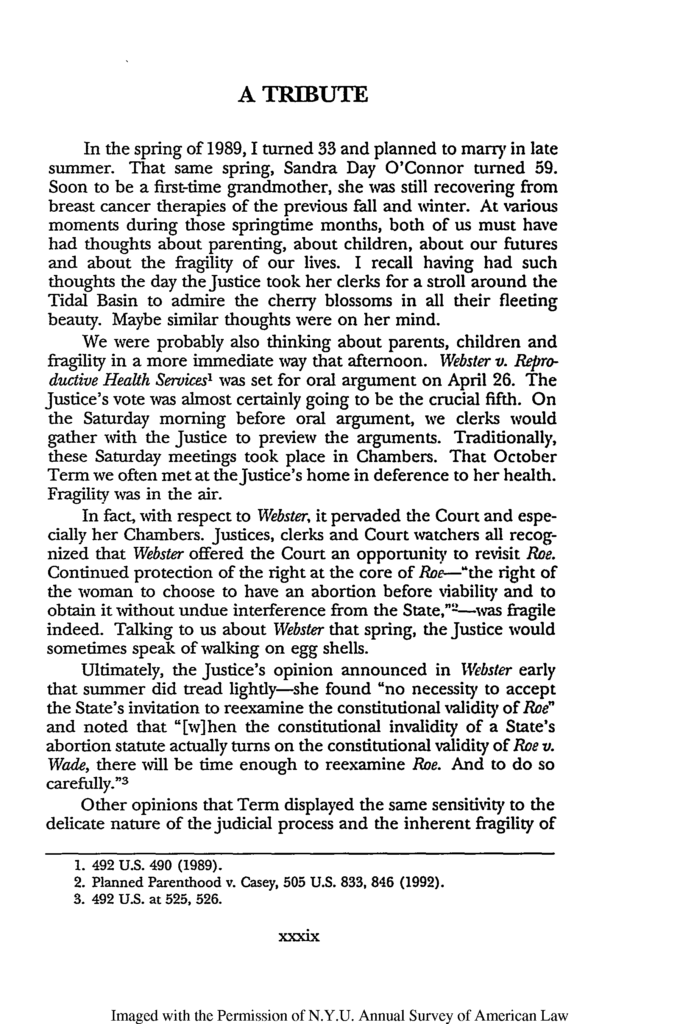An Impressive Show: A Tribute to Justice O’Connor
AN “IMPRESSIVE SHOW’: A TRIBUTE TO JUSTICE O’CONNOR*
Some time ago, when I happened to answer the telephone in Chambers, a caller said that she was submitting a clerkship application, but had a question: “Does the Judge spell her first name S-ON-D-R-A or S-A-N-D-R-A?” I responded that there was no clerkship vacancy. While I thought in regret a moment later that the confusion was understandable-“Day” and “Kaye,” Washington and Albany (both capitals)-in the end, I’m certain it was simply a matter of gender. And in the end it’s definitely a privilege to share a gender with Justice Sandra (that’s “a” not “o”) Day (not “Kaye”) O’Connor. The confusion is enormously flattering. In fact, Justice O’Connor herself made light of the phenomenon when she and Justice Ruth Bader Ginsburg attended a 1993 function wearing T-shirts with “The Supremes” on the front and “I’m Sandra, not Ruth” (and vice versa) on the back. It’s hard to believe that Justices O’Connor and Ginsburg are ever mistaken for one another-again, the physical resemblance between the two is hardly striking.1 But there is no question about it. In a day when women are still a rarity in high office, gender remains a defining quality, even within the judicial system. In the course of her distinguished career, Justice O’Connor has encountered, and recounted, instances of gender discrimination. They began with her very entry into the legal profession when, upon graduating near the top of her class at Stanford Law School in 1952,









